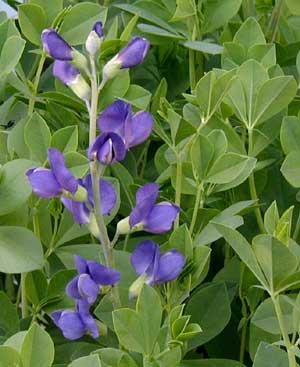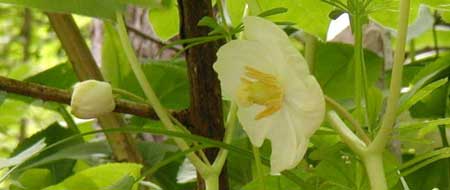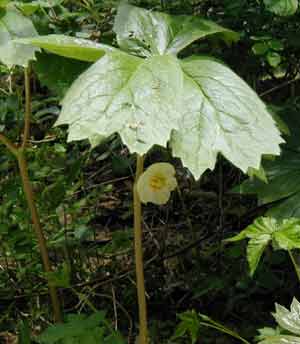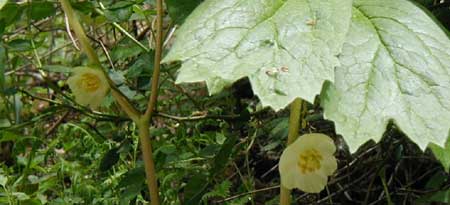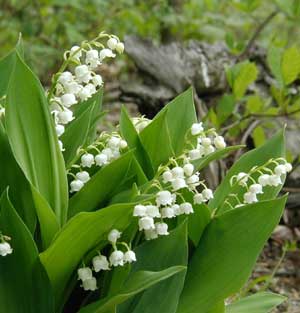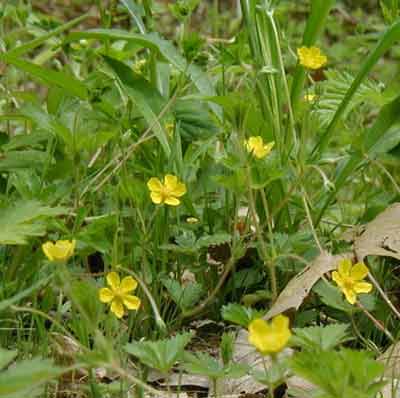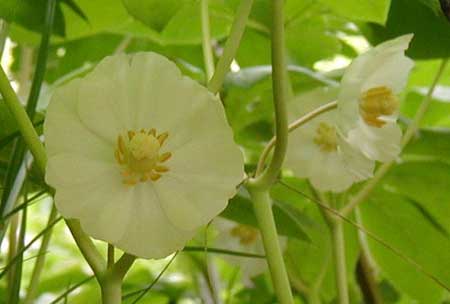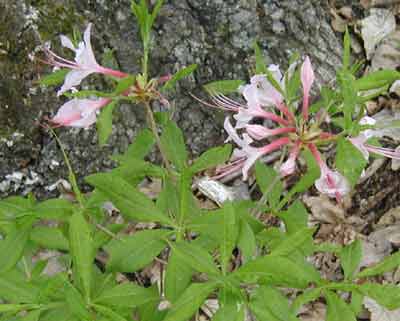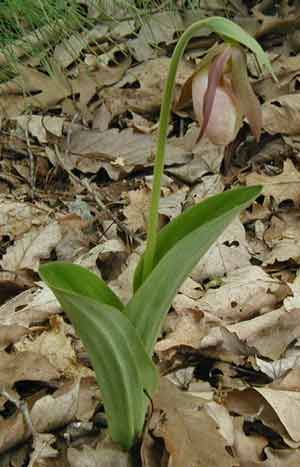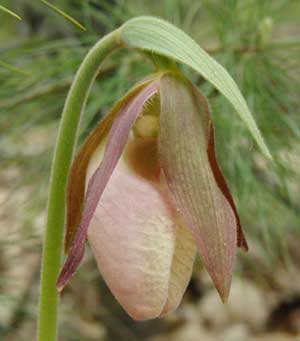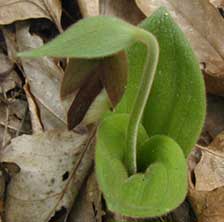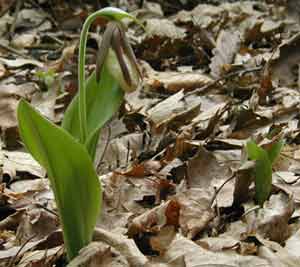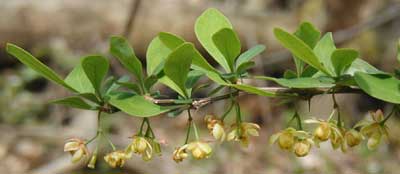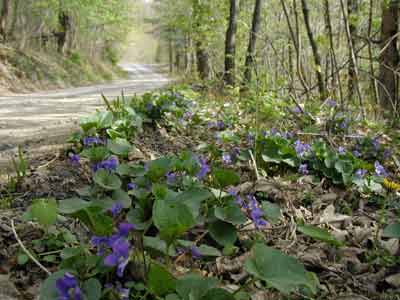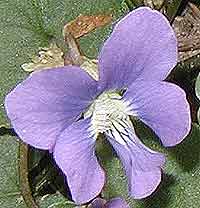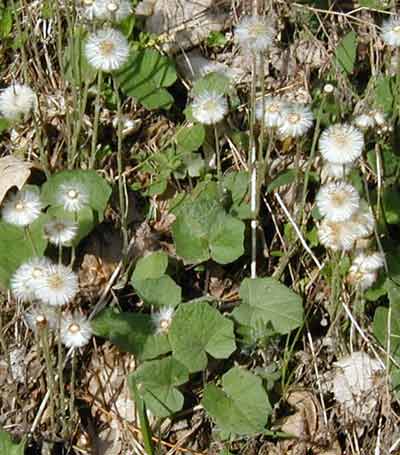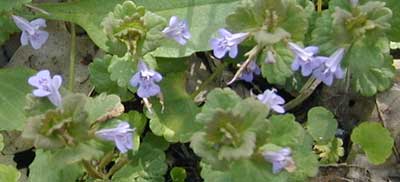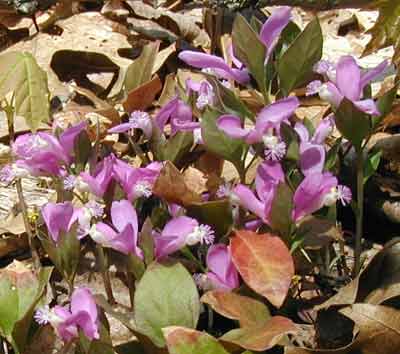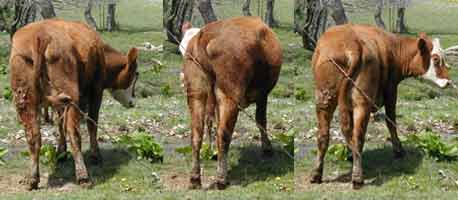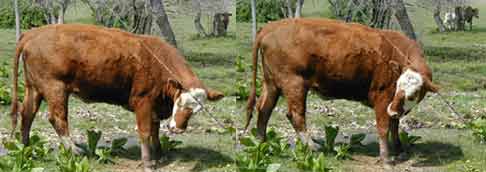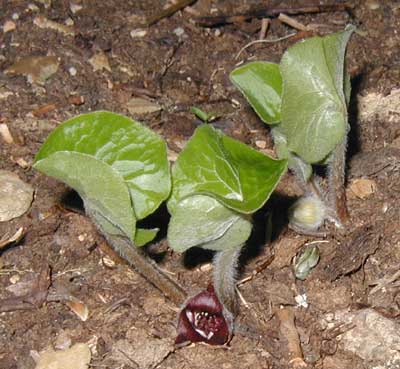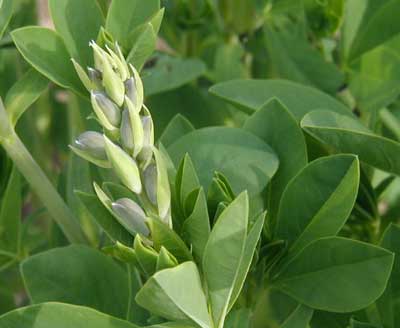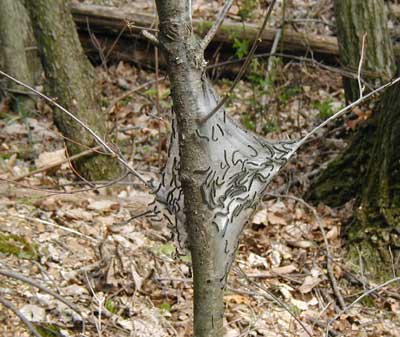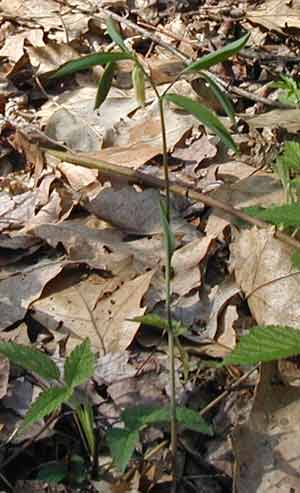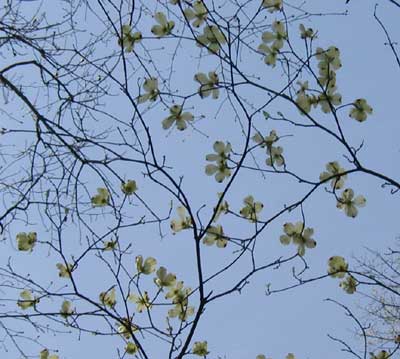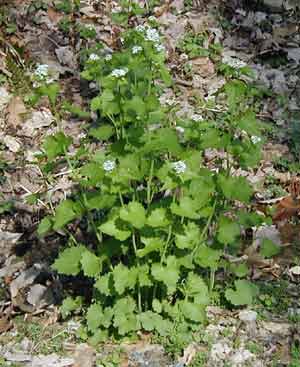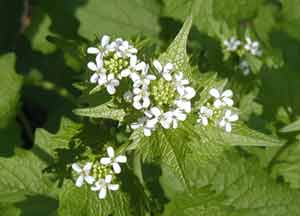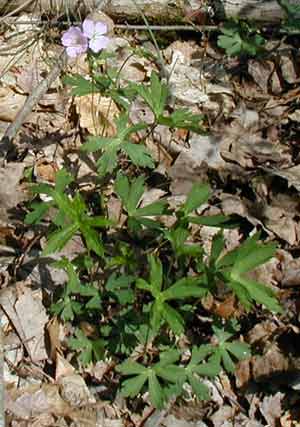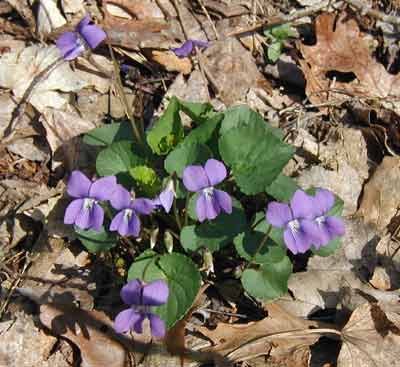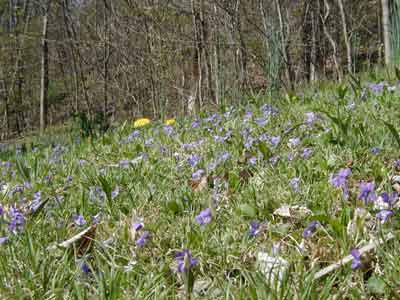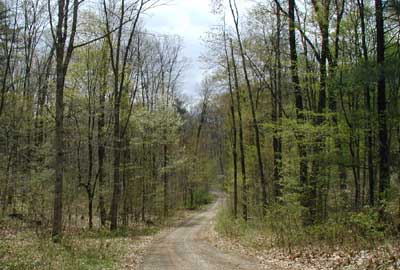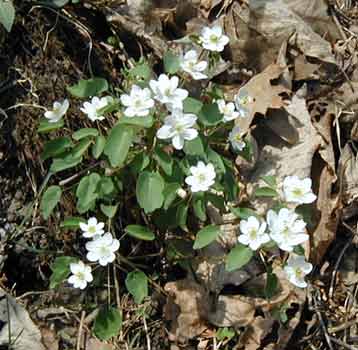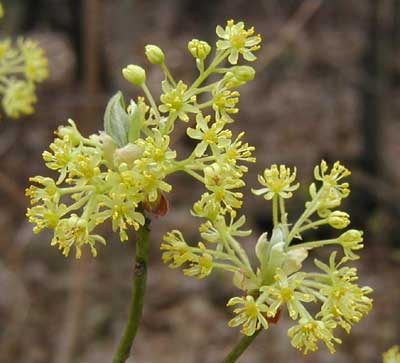In autumn I collect a few sprigs of the Japanese barberry for some greenery and a splash of color. The red berries that dangle down from the barbed branches are perfect for a little Christmas decoration. There are several of the barberry plants along the water stream that runs off from the pond. I only found one Japanese barberry plant blooming and it was situated high in the woods on the west side of the lane. I watched a bumble bee visit a few of the yellow, solitary flowers. None of the barberry near the runoff of the pond were blooming. The Japanese barberry is another alien plant that has escaped cultivation and adapted to local growing conditions. The pretty, scarlet red fruits hang from the leaf axils.
Yellow blooms of the Japanese barberry hang from the leaf axils.
As I approached the pond I saw and heard several frogs jump in. Standing near the pond I spotted the first newts of the season. I saw a couple red spotted newts come up for a breath of air and then dive back down to a deeper area. The pond is pretty muddy-looking, partly from the goldfish that were seen spawning a few days ago, and partly from the plankton bloom that is happening. The newts were at the surface as they danced, one wrapping his tail around the other. They broke apart and embraced only a couple times before sinking back to the depths.
Violet mania has struck! Each time I drive or walk down the lane I go slowly to savor the beauty of the violets since I know their days are numbered.
Violets adorn our country lane at many places.
The Common Blue Violet has five petals, like any other Viola species, with the two lower lateral petals being bearded and all three lower petals heavily lined.
Common blue violet up close showing bearded petals.
Coltsfoot is doing a mating dance all its own. The once bright yellow flowers now look like dandelions’ heads just before you blow off the seeds. The coltsfoot leaves are giving away their namesake — the shape of a colt’s foot.
Colt’s foot leaves are apparent as the flowers are ready to re-seed themselves.
One reason that I enjoy taking flower walks is that I can take my time and really observe things up close. For instance, consider this little weed, called Gill-Over-the-Ground. It is a very low-growing plant that noone driving a car will ever see. It has beautiful, irregular flowers, much like an orchid in shape, which are blue and violet. It is an established alien plant. As a member of the mint family it has been used traditionally in folk medicine for treatment of lung and kidney ailments and as a blood purifier.
Gill-Over-the-Ground is also known as Ground Ivy and will bloom until July.
The Pink Lady Slippers are about 4 inches out of the ground. Their blooming should be right around Mother’s Day.
A favorite woodland flower is also blooming that we take special pride in announcing. The fairy wings are blooming! Fringed polygala, or gaywings as they’re called, look like little fairies. Of the five sepals two lateral ones look like wings. The three petals form a tube from which the stamens erupt in a round, fringed little fairy head. Fairy wings are members of the milkwort family. In olden days it was thought that if a nursing woman, or cow for that matter, ate milkwort then her milk production would increase. Don’t know if there is any truth to that tale.
Fringed polygala, Gaywings, or Fairy Wings, are delights to see on a woodland path!
Speaking of cows, who said they are dumb animals? Check out this big girl using a wire to scratch an itch!
Cow rubbing her rear end itch.
Cow rubbing her front end itch!

